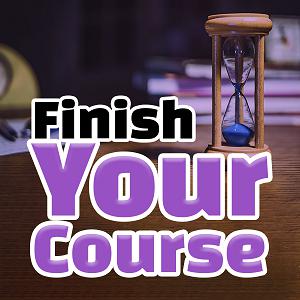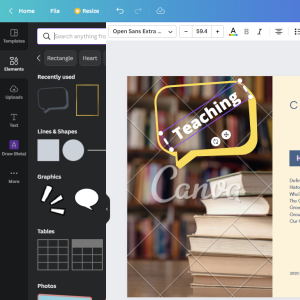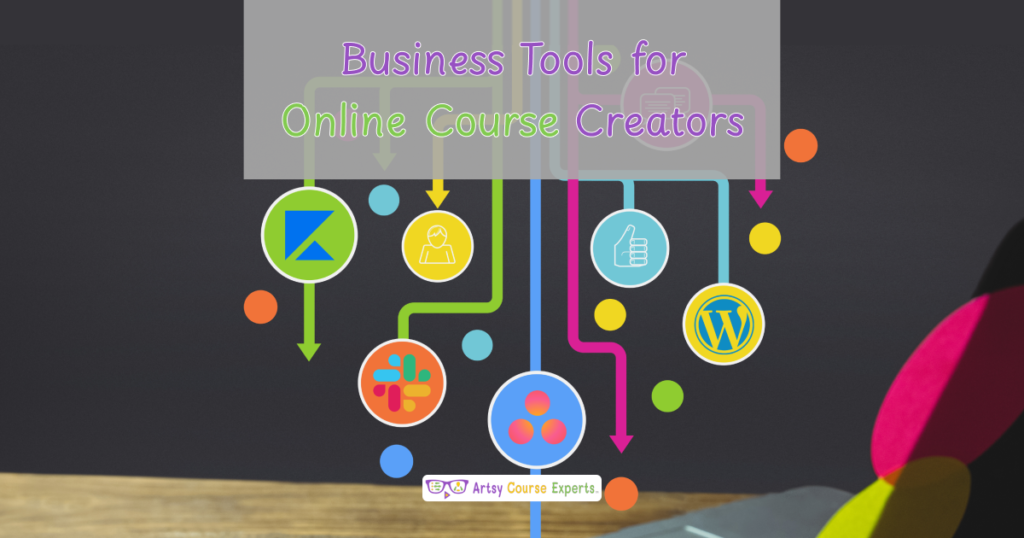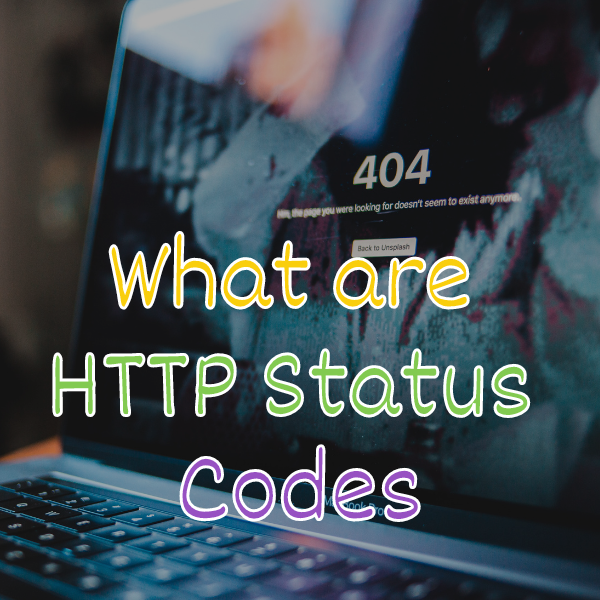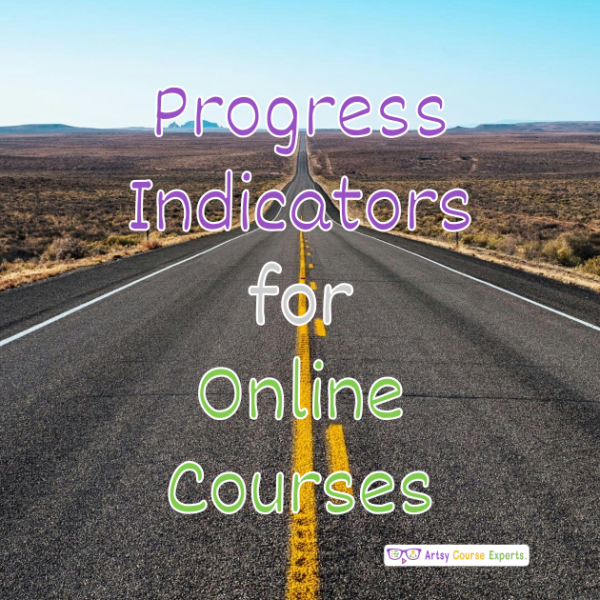Introduction To Course Reminder Emails
Teachers should use email reminders to help students to remind students to finish their courses.
Sometimes students simply forget that they registered for a course or they forgot the URL or login to get back into the course.
When creative teachers remind students to complete their course, it helps create more positive reviews for the course which translates to higher revenues for teachers.

What Is A Student Reminder Email
A student reminder e-mail is an automated email sent to your student after some time has passed when the student hasn’t yet completed the course.
The email should provide the student with a friendly reminder that this course is still available to them including an easy-to-click simple URL link that takes students directly to the course content.
The email reminder should include other helpful links to help students manage their account and notification settings.
Why Should You Send Student Reminder Emails
Teachers should send reminder emails to help as many students as possible get through their course.
When students complete the course, several positive things happen:
- Students provide feedback via start and end of course surveys
- Students leave ratings and reviews to encourage more buyers
- Students tell their friends, family, and co-workers about the course
- Students purchase additional courses from the same teacher
To learn more about surveys, check out Using Surveys To Grow Your Course Sales.
With your gentle nudges, many students can eventually achieve their goals and your creative course may have been the thing to set them on a new trajectory.
High Unfinished Online Course Rates
Unfortunately, many students do not complete online courses and thus they don’t receive all the benefits and neither do online teachers.
Here are some of the most popular reasons why students don’t finish courses:
- They learned what they needed and that was enough for now
- The content was too hard
- The delivery was too difficult to follow along with – accent, software, bad video, bad audio, etc.
- The time commitment required was too long
- Student encountered problems – password, technical, software, browser
- They forgot about the course
Email reminders are the best way to help increase completion rates for online courses. So keep reading to learn how to best set up your reminders.
Some Students Need Class Breaks
There are times when students do need a break and are not able to complete a course because of an interruption.
Your course in the arts should be forgiving to students when a period happens when students can’t work on the course. The system should provide a reasonable amount of time so that students don’t lose access for at least a year. By the way, this information should be spelled out on your online course sales page. For more information about content access, click How Long To Allow Course Access.
Here are some reasons why students may need a break from your course:
- Sick or family emergency
- A vacation
- Too much school
- Too much work
- Lost access to computer or Internet
A great course reminder email should not sound like a pushy sales robot, but a helpful assistant that offers a reminder and links for whenever the student is ready to reengage on their terms.
Which Kinds Of Course Emails Should You Send?
As a course teacher, there are a wide variety of emails you could send your students.
One way to determine which emails you need to send to your students is by thinking about the student journey. To do this, think about every interaction from when your student sign up to when they wrap up.
Here are some common emails that teachers should send:
- Welcome to course
- New messages to read from teachers or other students
- Continue taking courses if they have taken a long break
- Congratulations on completing the course. Here is your certificate
- Suggested next steps with coupons or discount codes
These kinds of emails will help you stay connected with your students. If done well, students will get excited when they see an update from you with new information and tips. Remember you are their teacher, coach, and mentor. You may be the most important virtual or real relationship they have at this stage of their life.
When To Send Student Reminder Emails
When thinking about how often to send email course reminders you want to choose a frequency that’s not too often but not too far apart to keep the momentum going.
Your reminder should be smart and not on a periodic calendar-based schedule. Unlike task reminders where you get a reminder every Wednesday, unfinished course reminders should count days to trigger the email instead of choosing a day of the week. For example, if your students are logging in every week because they are taking the course on their free Saturday afternoons, then you shouldn’t send a reminder.
You also shouldn’t send a reminder if a student hasn’t logged in in just a few days like 3 days. Because at that point your course notifications may be too aggressive. In some cases even one week of no activity may not be an appropriate grace period.
We recommend sending a reminder e-mail after a student hasn’t logged in for more than 10 days. If this still feels too pushy, you can use 14 days in your friendly reminder default settings.
If you remind too late like after 3 months of inactivity, the students may have forgotten some of the essentials and are not able to complete the course anymore without completely restarting. Most students in this situation would just forget about the course at this point.
Depending on your course learning management system (LMS), you may be able to configure a maximum number of reminders per month to avoid annoying your students.
What Information To Include In Course Emails?
There are five pieces of information to include in the body of your course reminder emails.
First, include the specific course name the student is in the middle of taking.
Second, a friendly salutation with the student’s name.
Third, state your message purpose with regard to reminding the student about continuing their lessons.
Fourth, include a link to the course dashboard, where students can log in and continue the course.
Fifth, provide utility links to manage a student’s notification settings.
Which From Name To Use On Course Reminder Emails
Your reminder email should come from a well-known brand that your student knows.
In email, the from name typically has two types of names – the address and the name.
First, your from email has the technical email address with your domain. This is the name@domain.com address that comes from your SMTP or IMAP email server. The name part of each of your email addresses can have more parts separated by dots, dashes, or underlines. The domain can include all the standard top level domains endings like .co, .ca, .org, .biz, etc.
This email address could also come from a well known course system like skillshare or custom branded company domain like drumeo.com.
Secondly, your from email has a friendly text description like your course name or first name dot last name format.
Here are some example from names:
- Frankies Music Course
- FranchiHatz Fashion Academy
- Freddi Jam
You want to make sure that both the technical email address and the descriptive name are easy to identify for your students.
In the end, you want both from names to be recognizable. For example your email can come from no reply at udemy.com but your name could say Fashion Academy
Here are some examples:
- NoReply@Thinkific.com <Leilani’s Art Course>
- Notifications@Masterclass.com <Jim’s Film Course>
- Reminders@ArtsyCourseExperts.com <ArtsyCourseExperts.com>
What Is A Good Subject Line For A Course Reminder Email
Your course reminder email subject lines are very important!
You don’t want your subject line to automatically trigger a spam or junk filter on your student’s email. Also if it is not easily recognizable, a student could accidentally hit the button for junk, spam, or phishing.
You also don’t want your student to quickly delete without reading. This could happen when the name is vague and there isn’t a lot of other context shown like when reading emails on your mobile phone.
Here are examples of good subject lines:
- You have more lessons
- Do not forget to continue your Fashion Design course
- Continue Your Maya 3D Course
- Complete your class to get your certificate
A good subject line will supplement the perfect from name and let your students know quickly that this is about the student’s course and even suggest a Call To Action like – Continue, Complete, Watch, or Login.
What’s The Main Message Of A Course Reminder Email?
Good communication methods try to convey one primary message at a time.
Your primary message should be about getting your student to log into your dashboard again so that they can continue learning about that creative topic that they’re interested in.
This should be supplemented with a subtle inference that completing their training will help them on their journey to achieving some particular goal such as becoming a Photoshop expert or a published writer.
Here are the main points that you’re course reminder should drive home:
- Sign in
- Keep learning.
- Achieve your dreams.
Addressing Your Course Students By Name
Your technology platform should be able to know the first and last name of your students when they buy your course.
You can then utilize the first name to provide a personalized email to each of your students when you send manual or automated emails.
Your emails will have a higher open rate when you address your student by their name versus an email that starts with a generic hi which may get quickly deleted without much scanning.
Here are some good examples of email reminder greetings:
- Hi Lana,
- Iliana,
- Hey Ileana,
We feel that most courses in the arts should be informal. So avoid the formal greetings like Dear Mr. Soto.
What Teacher Tone To Use For Course Emails
We recommend that you write your emails using a caring aunt/uncle, coach style.
Use friendly, supportive, caring language. You can use language like “you’re almost done!”
Avoid being pushy, demanding, or salesy. Don’t say “Log in now to complete your course by date 12/31”
You want to use a gentle nudge reminder to move your students forward.
Here are some good opening sentences:
- This is a friendly reminder that your course Theater Stagehand course has more lessons
- You completed 7 out of 10 modules and we want to help you get to the finish line
- Just letting you know that your Spoken Word Poetry course has more good lessons whenever you are ready to continue
Allowing Students To Opt Out Of Reminder Emails
You should allow students to opt out of reminder emails to stop receiving them.
Students should be able to do this by logging into the course and modifying their account settings in the course management system.
Since there is so much to explore and do when a new student starts, most students will likely use the default settings for your course learning management system. So teachers should set good defaults for students to have the best experience out of the box.
Over time, if students start receiving too many messages, they will look for a way to turn off or slow down messages. Before that time comes, you may want to provide help information in your email, welcome video, or course tip documents about how to turn off or even better adjust but keep reminders on.
Allowing Students To Manage Reminders
Email reminders should provide a link for students can completely turn off their notifications as well as modify their settings.

If you choose to simplify your course emails as much as possible, we recommend having one link to “modify your email reminders”.
If you want to offer more choices, then you can have one to modify reminder settings and one to turn off course reminder emails. But be careful, because you would rather that students do not turn off all course emails.
Students can use the email link to access the notification settings page directly. Once on the exact settings page, students can turn off course email reminders or specify the frequency of how often they should get email reminders. Students can also navigate to manage other settings which can further improve the customer experience.
Using Templates
Many course systems will let teachers create templates for each of the emails, and this may include course reminder emails.
As a teacher, you will be able to edit your course reminder email in a large multi-row edit box.
You will have the ability to insert student and course information manually using a code or with the help of a button that lets you choose which variable to use.
A typical template may look like this:
Hi {{user.first_name}},
Don’t forget you still have more lessons.
Whenever you are ready, feel free to login here: {{sign_in_url}}
If you want to change your settings, click here https://www.yourcourse.com/settings
Talk to you soon!
Different systems will have different types of parameters that are supported. If you don’t see your parameter, you may be able to use an HTTP URL that will use cookies to show the student-specific page you are referring to.
Here are some of the most common parameters:
- Student name
- Course name
- Course link
- Percentage complete
- Settings link
How To Automate Your Emails
While you can certainly send manual emails to each of your active students it would be better if use email automation. Automation uses technology to send emails to many students automatically based on your teacher settings, templates, student needs, and student settings. Automation will have the server go through each of your courses, then for each of your students check and send them an email if required.
The email automation should be provided for you by your course management system like Thinkific or Kajabi.
The course system may send your emails for your course or integrate with your email service provider like MailChimp to send emails.
The course system should be able to be configured to send emails when a student has been inactive for a certain number of days. Alternatively, you may be able to specify the frequency of emails – like sending course reminder emails every two weeks.
Using The Course Messaging System To Update Students
Most course technology systems include a direct messaging capability. This is where you as a teacher can send a message directly to each student or to a group of students.
A teacher using this technique would scan a report to get a list of students. Then the teacher would see which of the students haven’t completed the course yet. The teacher would then send them a friendly reminder message to each of these students.
This manual direct message technique allows teachers to send a personalized message to students, where you can provide additional context and help. For example, “I saw you started the sewing blouses module but didn’t start the sewing dresses module, did you get busy, get stuck or was that the main thing you wanted to learn?”
This manual and direct message technique can be slow and doesn’t allow students to opt out of receiving notification messages. There is also a risk you could be sending the wrong messages to students.
The course messages may turn into a generic email message with a subject like “New course message from your teacher”, which is very different from “Come finish your course!”. The more specific continued course message is preferable to motivate students to log in.
To maximize your effectiveness in pulling back those students who haven’t yet completed your course, you could send a course email reminder periodically in addition to an occasional direct message.
Showing Students Which Lessons Were Completed
It is helpful to show students a percentage of how far into the course they have completed. You can certainly show this on the dashboard, but it is also helpful if this percent was included in the reminder email.

Showing the percent complete is a great way to gamify your learning experience. Many students like seeing their percent complete stats go up week over week. So by helping students achieve small wins, they will be more likely to ultimately complete the course.
Once students log into the course system, they should have an easy way to know which modules have been completed as well as which lessons have been completed.
Since modules contain multiple lessons it would be useful when all the lessons are completed the module shows a completed symbol like a checkmark or a done label.
In some systems, lessons that are completed are colored in gray or use strikethrough styling to indicate that they have already been taken and completed.
What Constitutes A Completed Course Lesson
Basic course systems should be able to know if a student has started watching some video or opened a PDF to flag that the lesson has been started.
Knowing if a lesson has been completed is a little harder. A more advanced course technology system could actually examine the percent watched of a video lesson to see if it was completed. Systems could also use end of module quizzes to see if all the lessons within a module were completed.
If you are able to specify a value like watching greater than 60% of a lesson should indicate the lesson was watched, we recommend you choose a conservative value instead of a high barrier like 90%. This will keep your students engaged and moving along with positive feedback.
But even a high-level rough estimate using intervals at 20%, 40%, 60%, 80% can be helpful to motivate a student through a course.
Course Reminders Trends
One course trend that is becoming popular is giving your students access to your email newsletter tips.
This is becoming easier with the advancements in technology. Specifically, systems are providing APIs (or programming interfaces) that allow different systems to work together.
For example, your online course management system could notify your WordPress or MailChimp system that you have a new course subscriber and that she should be added to your email newsletter.
If you do provide this extra newsletter, you should be transparent with your students so they are not surprised that they have been signed up for your company/blog newsletter. To do this properly, you may want to have your students opt into the email newsletter and you must handle unsubscribe requests correctly.
By combining your course education emails with general tips you can become top-of-mind for students. This allows your services to be one of the first emails that are read when students are scanning their inbox.
Using Bookmarks
Teachers can recommend to their students to bookmark their course page website address.
This way students can quickly get back to the course whenever they need to.
Having a reminder about the course in their bookmarks menu will help students remind themselves about the course as they use their web browser.
You can also tell students to bookmark your course in your welcome email or your welcome video.
We recommend suggesting the bookmark via email because you are already including the link in there. You can say something like:
“Here is the link to your new Bailando Salsa dance course. We recommend you open it up in your browser and add it to your favorites to bookmark it”.
Not Using Course Reminder Emails
If you prefer to not send course reminder emails, that is okay.
You can be the easy going teacher that doesn’t push your students.
While your course may have less reviews and revenues, you could be known as a nice causal course to learn a certain skill.
Your students may prefer a chill creative teacher versus one that is pushy like a parent or a boss.
Students will be happy learning what they needed and can come back if they ever need more lessons.
If this is your approach, consider spinning it as a positive feature in your Frequently Asked Questions. For more information, click Frequently Asked Questions for Creative Course Sales.
Handling Student Password Problems
A common problem that online course students face is forgetting their username and password.
You can help students get through courses by providing a link to your password recovery page in the class reminder e-mail.
Early welcome emails can also let your students know that they can recover their username and password at any time using a specified link. You can tell students to save or archive the email in case they need it in the future. This way if they do lose their password they can remember another way to access their course.
Sample password recovery tip:
If you ever forget your course username or password, please click the following link to get back into your course. You may want to save or archive this email to help you in the future.
Keeping Your Course Emails Out of Junk Mail
Early in the course, you should let students know to add the course emails to the safe senders list and to make sure that they’re not accidentally getting moved into the junk or spam folder.
A good way to avoid spam filters is by having your students add your from email address to their contacts list.
This way, when you send any course email including course completion reminder emails they will show up in your student’s inbox.
The same thing goes for password recovery emails which are so important and a huge part of why many students don’t complete courses.
Don’t Send Emails If Students Turn Off Notifications

It is very important when a student asks to not be reminded about the course that you remove them from your notification list.
Many companies can get in trouble because they are sending emails to people that don’t want their emails. So don’t spam and follow email best practices.
The last thing that you want is for your course email and company domain to get blocked across various countries or to get blocked by well known email service providers like Hotmail, Gmail, and Yahoo.
These email service providers (ESPs) track how many complaints are coming in for each email and company. There is an acceptable industry tolerance level for errors or the occasional complainer but once a company gets in trouble it can take months or years to clear up your email sending capabilities.
Financial Effects Of Using Reminder Emails
Students that complete your course will eventually have the option to leave valuable feedback about your course. This feedback can help you improve your course and improve your sales using detailed customer pain point words as well as describing the transformation that your students have gone through.
After the class, many students may leave ratings and reviews for your course. The positive ratings and reviews will help you sell more courses through your online course sales page. For more information, see Using Ratings And Reviews In Your Online Courses
For months and years after taking the class, students will be telling colleagues, friends, and family about this course and may even recommend it to others.
Finally, students that complete your course may really like your style and appreciate your skills, thus there is a good chance that they may sign up for additional courses, services, or products.
Maybe Your Courses Are Too Long To Finish
It could be possible that your course is just too long with too many modules and too many lessons.
Many students may simply not be able to get through it all or are not interested in every part of your course.
With so much pressure to sell courses, some teachers feel the need to have a really large number of modules and lessons in order to compete with other courses. However, this can overwhelm students leading to a high percentage of students that don’t get around to completing your course. If your course really does require a commitment, consider updating your course requirements and reviewing Specifying Requirements For Your Online Courses.
Your course may contain extra lessons that are beyond the core skills and transformation that your students are looking for. If this is the case, you can try reducing the lesson count. In some cases, it may be beneficial to redistribute your lessons across all of the modules or add a few more modules to have less lessons per module.
If you make some fair attempts to get more students to complete the but still have a low completion percentage, you may want to reduce your course. However, take advantage of that finished content and use it in other courses, free courses, or social media.
Offer Rewards For Finishing Courses
One idea to help increase completion rates is to offer a reward to students that finish your course.
The reward can be a bonus of some sort like an ebook, template, or access to a community.
Throughout your course, you can remind your students that when they complete all the lessons they will get this extra bonus.
Once students finish the course you can automatically or manually email them a bonus. The email can not only say thank you for completing the course and here is your bonus, but it can also remind them to leave a review for the course or utilize a coupon for a follow-on course.
Alternatively, without advanced automation, you could provide the bonus near the end of the course in a final lesson.
To learn more about bonuses, click Include Bonus Content – For Increased Sales & Satisfaction.
What Are The Best Courses Doing?
The best courses are sending out reminders at least every two weeks after students have stopped logging into the course system classes and when there are still remaining lessons.
The best course systems also slow down sending course reminders after each reminder to not annoy their students. If some students still don’t log into the course, some course systems stop sending reminders, while others spread them out further like 2 weeks, 4 weeks, 3 months, 6 months.
Final Course Reminder Tip
One last tip is to keep your email reminders short, scannable, and less than one page.
You want to use enough whitespace and avoid long, blocky paragraphs.
Your email should use just a few short sentences like:
- You are getting this email because you are in course name
- You have more modules and lessons that can help you advance
- Log in link to course whenever you are ready to continue
- Here are some helpful links
You want to message your students like a service business where you are helping your customers with some key information and not annoying them or sending them giant business mumbo jumbo emails that nobody reads.
Summary – Use Course Not Yet Completed Reminder Emails
Sending course email reminders is an easy way to get more of your students to complete your course. Subsequently, when more students complete your course then teachers start to earn more from indirect and direct revenues.
Many learning management systems already include options to send course reminders, so configure them for better overall business results. We have reviewed a handful of best practices like using a good from email, greeting your student by name, providing a concise main message, and including helpful links.
You also want to use good email standards like adding your email to the safe senders list to skip the junk folder and not over-communicate to the point of annoying or spamming your students.
When done well teachers benefit by having more students complete their courses and students benefit by having a great teacher who provides gentle reminders to help students achieve their goals.
Need More Help with Email Reminders
If you need more help configuring reminders for your online course system, please contact us so that we can set up a time to talk about how we can improve your email tools including sending automated email reminders. For more information Analyze Your Course Email Settings.




